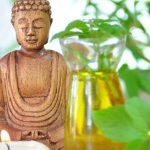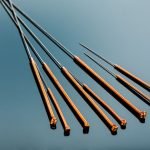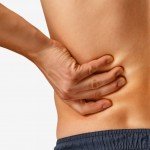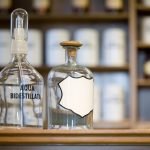The Milk Cure
Nature Cure Clinical Pearls
Sussanna Czeranko, ND, BBE
We now come to the question: “Ought milk to be drunk fresh or boiled?” The best and right way is, of course, to drink it as nature provides it, fresh; and experience has shown that fresh milk is more readily drunk, better tolerated and more easily digested than milk which has been boiled. – Benedict Lust, 1900, p.180
The milk cure is one of the most important weapons with which we can combat a whole series of chronic diseases. – Philipp Karell, MD, 1911, p.217
The milk cure is based upon Nature’s most simple laws. It is adapted to all complaints of a chronic nature and is especially indicated in those ills having their origin in the digestive tract … consequent upon mal-assimilation of food and the resulting malnutrition. – Howard Hill, 1911, p.6
The search for the correct “diet” has been an unending merry-go-round that continues to entice and mesmerize our salivary senses. When new diets surface, we are quick to form opinions and make decisions, often trying them out. The rules of dietary wisdom tend to gather critics; and what’s more, the rules are constantly changing. More often, there are as many voices castigating a diet as extolling its virtues. More than a century ago, there was a popular diet called the “milk diet,” which attracted more adherents than opponents.
I have encountered the milk cure numerous times and have ignored the milk diet, eschewing its use because of contemporary concerns about lactose intolerance and related issues. However, a recent conversation with a NUNM student, Anaheed Jackson, caused me to look again. Anaheed shared her story about a serious eating disorder and explained that fresh raw milk renewed her health and became a key food in her diet. Raw milk for Anaheed allowed her to reestablish a healthy relationship with food. Her story was the impetus for this article on the milk cure – a true pearl from the past.
Philipp Karell
The history of milk as a medicinal substance can be traced back to the days of Hippocrates. The early Naturopaths also valued milk’s therapeutic properties. In 1911, Benedict Lust published a series of articles about a lecture by Philipp Karell, MD, the Imperial Russian Court Physician and Privy Counselor, who had practiced medicine for 34 years in the mid-19th century. Dr Karell had treated several-hundred severe and complicated cases using the “milk cure” and shared numerous cases to demonstrate the efficacy of the therapy.
Karell cites historical examples of how milk throughout the ages alleviated chronic diseases. Hippocrates recognized the milk cure as curative for consumption [tuberculosis], severe attacks of gout, sciatica, and leucorrhea in women. (Karell, 1911, p.218) The Greek physician, Galen, recommended milk for consumption and sent patients to Stabian Mountain, famous for its pastures and milk cure. (Karell, 1911, p.218) Friedrich Hoffmann, a Prussian physician from the 18th century, praised the excellent properties of milk, “especially donkey milk, being helpful in cases of chronic diseases, consumption, atrophy, podagra, gout and scurvy … by taking large quantities.” (Karell, 1911, p.218) Numerous authors and physicians treated gout using the milk cure that worked magic. The French physician, S. A. Chretien, published in 1831 cases of dropsy [edema] that were treated using the milk cure. His successor, Serre d’Alais, gave “a report of more than 60 cases of different kinds of dropsy which he treated within five years and [had] resolved by the milk cure.” (Karell, 1911, p.219)
In a 1900 article, Lust writes that milk was not an exclusive food for infants, but was useful as well for a wide variety of conditions. Lust cites milk as being effective “to increase a patient’s strength, or to improve the condition of the blood and the humors by means of a somewhat more nourishing diet, as in convalescence after exhausting diseases, such as scarlet fever, diphtheria, typhus, etc.; also after painful deliveries; in scrofulous, rickets and consumption.” (Lust, 1900, p.180)
Pasteurized Milk
The question of what kind of milk ought to be drunk showed up often in the Lust publications. Lust writes, “Experience has shown that fresh milk is more readily drunk, better tolerated and more easily digested than milk which has been boiled.” (Lust, 1900, p.180) The apyrtrophers (those who ate “unfired foods”) were adamantly opposed to pasteurization of milk. George Drews, author of Unfired Food and Tropho-Therapy (1912), saw cooked milk and foods as unfit for humans. When milk was cooked at high temperatures, such as pasteurized milk, it was seen as devitalized milk. Sterilized milk was even worse, because it had been subjected to greater heat. (Drews, 1916, p.119) In fact, the difficulty in finding fresh, unadulterated milk led people to turn to naturally fermented milk drinks.
The early Naturopaths contended that although pasteurization’s goal was to make milk safer, this outcome was not entirely true. The process, named after Louis Pasteur, was intended to remove pathogenic bacteria by heating, with the goal of reducing transmission of diseases such as typhoid and tuberculosis. In this regard, William Utrecht writes, “We have eliminated the fresh milk from our diet because it is quite often dirty and filthy, and it is difficult to secure clean, fresh milk. In any case, pasteurization does not make milk clean. It is merely a heating process in which everything that is in the milk, including the dirt, is heated to 145°F/63°C and then cooled again.” (Utrecht, 1928, p.60)
George Drews felt that pasteurization merely provided “dead food … fit for incubating scavengers, the bacilli and cocci. Warm dead milk is just the stuff that the tubercle bacilli like to feed on; for they do not feed on living tissue until it is dead.” (Drews, 1916, p.119) Drews did not recommend pasteurized milk for infants. He writes, “Pasteurized milk fed exclusively to infants, will produce rickets, constipation and finally, consumption.” (Drews, 1916, p.120)
Sour or fermented milks fared better. “Natural milk allowed to sour will not putrefy, but if the milk has been pasteurized or sterilized, the germs of fermentation have been destroyed, which gives the germs of putrefaction a chance.” (Drews, 1916, p.120) In his view, naturally soured milk was the more desirable form. “Thick and curdled milk can also be recommended. It is more easily digestible than fresh milk, because the first stages of digestion, the coagulation of the albumen, is already accomplished.” (Lust, 1900, p.180) Sour milk alleviated constipation for those milk drinkers who suffered this complaint.
Milk Intolerance
Today, milk sensitivities are common and the milk cure seems out of place. We are familiar with milk allergies and sensitivities, and when Philip Karell and Howard Hill had patients complaining of adverse effects from drinking milk, they had a response for such people. In their view, flatulence, vomiting, and other digestive symptoms experienced during the milk cure indicated that the problem did not remain with the milk but rather with the presence of an unhealthy body. Hill writes, “No healthy stomach refuses Nature’s first food, milk; this is positive proof of an unhealthy interior and shows how badly a ‘house cleaning’ is needed.” (Hill, 1911, p.4)
Lust saw milk intolerance occurring when people with “weak stomachs” suddenly began drinking large amounts of milk, causing milk proteins to coagulate and form large, undigested clumps in the stomach. He recommended that people with weak stomachs drink milk by the mouthful and to eat a little bit of bread at the same to prevent coagulation. (Lust, 1900, p.180)
Our early naturopathic doctors observed that the relationship between digestive imbalance and the emergence of chronic diseases was interrelated. Another author on the milk cure, Howard Hill, writes in the first paragraph of his booklet, “There is little doubt but what most of our bodily troubles, other than those arising through accident, have their origin in the digestive tract, or alimentary canal. They are due to a clogged system, brought about by overtaxing the digestive organs 1) with too much food, and 2) with improper foods―foods that don’t nourish or that yield only a minimum of nourishment, the result being an excess of uric acid which irritates the mucous membrane of the stomach and intestinal tract, and being taken up by the blood gradually poisons the entire system.” (Hill, 1911, p.1) The seat of disease located in the digestion was a familiar moniker of the early Naturopaths, and digestive diseases continue to baffle medicine today.
Milk was viewed as Nature’s “perfect food,” providing every element. Those who used the milk cure were effusive about the merits of the milk diet. Karell’s use of the milk cure was incredibly successful, especially in cases that defied medicine. He writes, “I can state as a fact according to my own experiences that the milk cure surpasses all the other means of treatment which are known to me, in all cases of dropsy, in asthma, … obstinate neuralgia, which came from the abdomen. (Karell, 1911, p.220)
Karell’s Milk Cure
Karell’s instructions to patients beginning the milk cure was to abstain from all foods other than milk. We must keep in mind that Karell lived before pasteurization and that milk drunk in the milk cure would have been raw and from healthy cows. No GMO, no Roundup, no pesticides, and no body burden consisting of today’s taxonomy of over 100,000 chemicals existed a century ago. Milk was considered healthy if it could be obtained from healthy cows.
His prescription to the sick was to take half a cup or a whole cup (60-180 g) of skim milk 3 to 4 times daily, at fixed and strictly observed intervals. (Karell, 1911, p.296) Milk was drunk slowly to give the salivary enzymes an opportunity to act. Karell was strict about when milk was taken and did not adhere to a casual regimen of drinking as much milk as one wanted. Instead, he counseled his patients to leave 4-hour intervals between each milk intake, preventing any over-burdening of the stomach. He writes, “I always adopt the rule that the sick patient take his ration at 8 a.m., at noon, at 4 p.m. and 8 in the evening.” (Karell, 1911, p.296) One point stressed by Karell, as patients began the milk cure, was that milk portions be small and increased gradually.
The patients Karell presented were long-time sufferers for whom all the available medical interventions that were tried had failed. When these patients came to Karell, they had used up all of their options and milk was their last hope. The milk cure was conducted for several weeks and often continued after a cure.
Karell’s extensive experience using the milk cure revealed that combining the milk cure with other foods resulted in less than desirable results than the exclusive milk fare. If patients became thirsty on the milk cure, water was permitted. If patients became tired of the liquid diet and craved solid food, in the second or third week dried rolls could be taken at the 4 PM mealtime. (Karell, 1911, p.297)
Constipation was often experienced by patients beginning the milk cure, which was a good sign. If the constipation became obstinate, Karell suggested boiled prunes or a roasted apple. An enema could also be administered. If the bowels rumbled and diarrhea occurred, the milk was either too fat or too much had been consumed. (Karell, 1911, p.297) If a patient vomited bile and mucous, it was thought that the products of mal-assimilation, which the milk simply stirred up, were being evacuated. (Hill, 1911, p.5)
Patient Cases
Case of Vomiting
Karell recounts a case of a woman who suffered for 4 months from vomiting and diarrhea caused by chronic bowel inflammation. He found her extremely emaciated with an adipose liver, and she had a past history of long-term menorrhagia and hemorrhage of the gut. He directed the woman to take 4 tbsp of skim milk 3 times per day, with no other food to be taken. “The vomiting stopped at once, the diarrhea at the third day, the stool became more formed and of such an appropriate quantity as had not been the case for years, and at the end of the second week the woman drank two bottles [of milk] daily.” (Karell, 1911, p.297)
Case of Angina
A 67-year-old man presented with angina pectoris, and for many years had also suffered from vertigo. He presented with shortness of breath, catarrh of the lungs, and edema in the legs and feet. On examination, the man had accelerated superficial breathing, abnormal heart sounds, an enlarged abdomen, a pulse over 90, and his tongue was intensely red with two yellow stripes in the middle. The patient was unable to lie in a horizontal position at night, thus needed to sit upright in bed. He experienced shooting pains in the left side of the chest and in the region of the heart, and urination was sparse and dark in color. (Karell, 1911, p.362)
The patient had tried all known remedies without success. The man’s physician exhausted his options and had consented to the milk cure, which Karell administered. After 5 weeks, the urine discharge increased, relieving the edema of the legs; heart sounds returned to normal. “From the sixth week the patient received three times a day milk and once another fitting meal. About eight weeks later, the man was in his pulpit and … enjoys perfect health.” (Karell, 1911, p.363)
Other Disorders
The literature reports that Dr Karell’s successes with the milk cure were exceptional in cases of anemia, edema, rheumatism, obstinate weakness in the digestion, and, in particular, gout. (Karell, 1911, p.433) The milk cure was especially effective and indicated in any cases that were overshadowed by a defective digestion. Charles Porter, MD, used the milk diet to reduce high blood pressure, normalize body temperatures in anemic patients, and normalize body weight in both the underweight and overweight. Before commencing the milk cure, Porter would prepare patients with a preparatory fast. “After the preliminary fast, most patients should be put to bed, and take the milk diet while resting as completely as possible, mentally as well as physically.” (Porter, 1917, p.309)
Porter, like Hill and Karell, had much to say about the milk cure. These clinicians all claimed impressive clinical successes. Porter had over 32 years of experience with the milk diet and listed over 40 diseases, including obesity, colitis, neuralgia, Bright’s disease, early stages of consumption, goiter, paralysis, leukemia, and Addison’s, etc. (Porter, 1917, p.310)
Critics
Not everyone shared the views of those using the milk cure. One such man, Dr J. A. Adams, a Naturopath, wrote to Benedict Lust, the editor of the Naturopath and Herald of Health, with disappointment and criticisms. Personally experimenting with the milk diet on 3 occasions, Adams found that the drinking of copious amounts of milk caused his body to perspire profusely and that he smelled like “a cheese factory.” (Adams, 1911, p.529) Although, he had recommended the milk diet to patients, he was not comfortable with the difficulty of executing such a diet. Adams was a vegetarian, and milk as the only food item in a diet seemed brutal.
Milk, Nature’s Perfect Food
Hill states that “milk is one of the most wonderful of all Nature’s products in being not only a perfect food in itself containing every element of nutrition that even the adult human body requires in its purest form, but being entirely free of uric acid, is also a potent remedy for all kinds of chronic maladies.” (Hill, 1911, p.2) A century ago, uric acid was one of the targeted evils in medicine. High levels of uric acid were associated with gout, edema, kidney diseases, and hypertension. Gout was common in the early 20th century, and – unknowingly – those using the milk cure had an ideal protocol for treating gout.
What Dr Karell and his contemporaries did not know is that milk contains proteins such as casein and lactalbumin, which has been found to cause the excretion of uric acid. Another protective element found in milk is orotic acid, which decreases the reabsorption of uric acid by promoting its excretion by the kidneys. Early research identified orotic acid as vitamin B13, and more recent findings have established orotic acid as ameliorating gout. (Loffler, 2016, p.566)
The benefits of the “milk cure” continue to be discovered and revealed to the contemporary naturopathic doctor as well.
References:
Adams, J. A. (1911). Views of Dr. J. A. Adams, Naturopath and Lawyer, on the milk diet. The Naturopath and Herald of Health, XVI (8), 528-529.
Drews, G. J. (1916). Milk for Apyrotrophers. Herald of Health and Naturopath, XXI (2), 119-120.
Hill, E. H. (1911). The Milk Cure and How to Take It. Self-published booklet: 23.
Karell, P. (1911). The milk cure. The Naturopath and Herald of Health, XVI (4), 217-221.
Karell, P. (1911). The milk cure, the factors of the cure. The Naturopath and Herald of Health, XVI (7), 243-434.
Karell, P. (1911). The milk cure, my method. The Naturopath and Herald of Health, XVI (5), 296-300.
Karell, P. (1911). The milk cure, continued. The Naturopath and Herald of Health, XVI (6), 362-367.
Karell, P. (1911). The milk cure, the factors of the cure. The Naturopath and Herald of Health, XVI (7), 432-434.
Loffler, M., Carrey, E. A., & Zameltat, E. (2016). Orotat (orotic acid): an essential and versatile molecule. Nucleosides Nucleotides, 35 (10-12), 566-577.
Lust, B. (1900). Milk. The Kneipp Water Cure Monthly, I (10), 180.
Porter, C. S. (1917). Milk diet as a remedy for chronic disease. Herald of Health and Naturopath, XXII (5), 308-310.
Utrecht, W. (1928). Buttermilk. Nature’s Path, XXXIII (2), 58, 60.
 Sussanna Czeranko, ND, BBE, graduate of CCNM, is a licensed ND in Oregon and has developed an extensive armamentarium of traditional nature-cure tools for her patients. Especially interested in balneotherapy, botanical medicine, breathing, and nutrition, she is a frequent presenter. As Curator of the Rare Books Collection at NUNM, she has completed Hydrotherapy in Naturopathic Medicine, the tenth book of the 12-book series in the Hevert Collection. Her next large project is the completion of her new medical spa, located in Manitou Beach, Saskatchewan – a magical, saline lake. Come join her for the Inaugural “Finding Our Roots Again Retreat,” August 2019.
Sussanna Czeranko, ND, BBE, graduate of CCNM, is a licensed ND in Oregon and has developed an extensive armamentarium of traditional nature-cure tools for her patients. Especially interested in balneotherapy, botanical medicine, breathing, and nutrition, she is a frequent presenter. As Curator of the Rare Books Collection at NUNM, she has completed Hydrotherapy in Naturopathic Medicine, the tenth book of the 12-book series in the Hevert Collection. Her next large project is the completion of her new medical spa, located in Manitou Beach, Saskatchewan – a magical, saline lake. Come join her for the Inaugural “Finding Our Roots Again Retreat,” August 2019.










